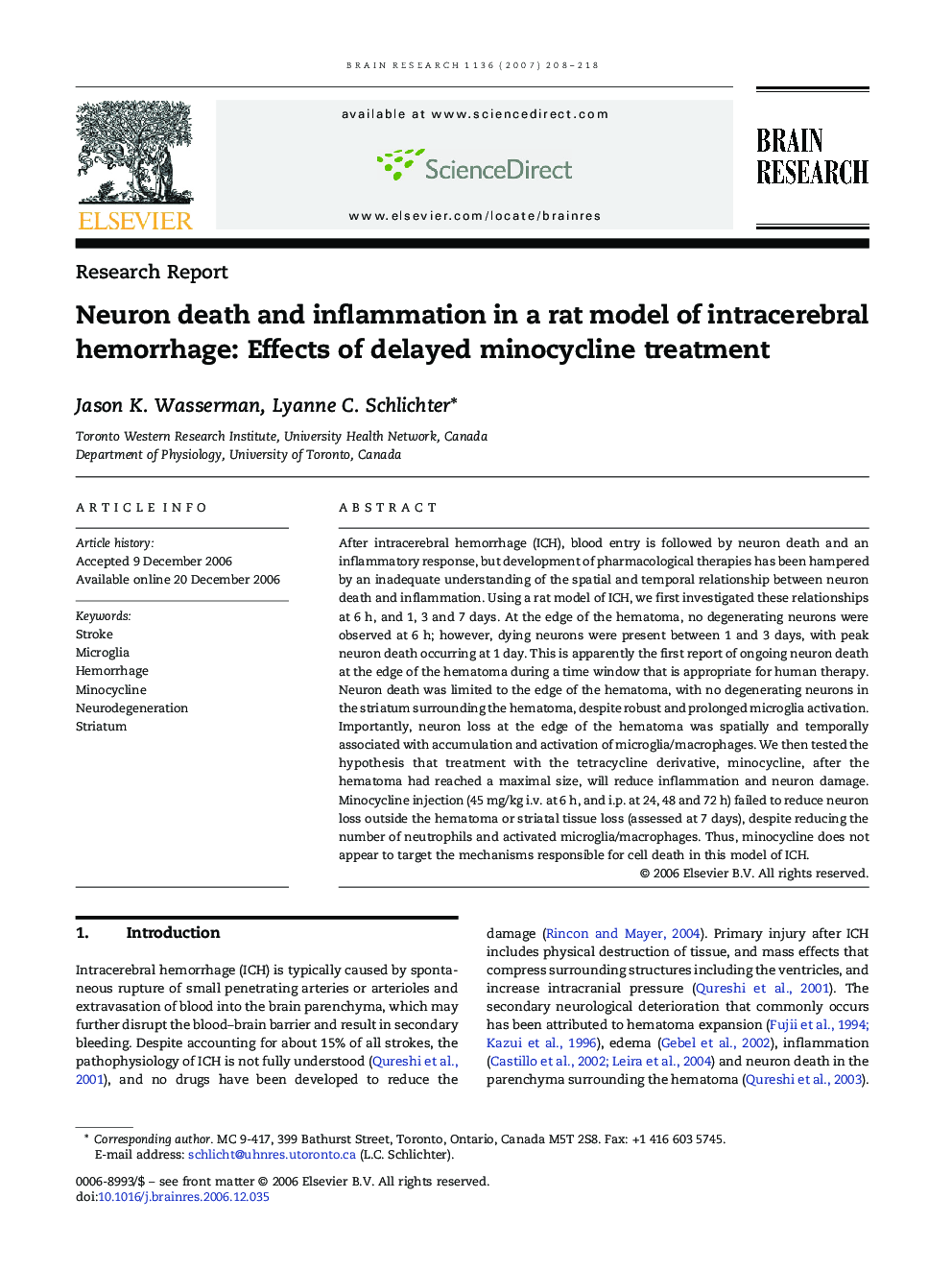| Article ID | Journal | Published Year | Pages | File Type |
|---|---|---|---|---|
| 4331540 | Brain Research | 2007 | 11 Pages |
After intracerebral hemorrhage (ICH), blood entry is followed by neuron death and an inflammatory response, but development of pharmacological therapies has been hampered by an inadequate understanding of the spatial and temporal relationship between neuron death and inflammation. Using a rat model of ICH, we first investigated these relationships at 6 h, and 1, 3 and 7 days. At the edge of the hematoma, no degenerating neurons were observed at 6 h; however, dying neurons were present between 1 and 3 days, with peak neuron death occurring at 1 day. This is apparently the first report of ongoing neuron death at the edge of the hematoma during a time window that is appropriate for human therapy. Neuron death was limited to the edge of the hematoma, with no degenerating neurons in the striatum surrounding the hematoma, despite robust and prolonged microglia activation. Importantly, neuron loss at the edge of the hematoma was spatially and temporally associated with accumulation and activation of microglia/macrophages. We then tested the hypothesis that treatment with the tetracycline derivative, minocycline, after the hematoma had reached a maximal size, will reduce inflammation and neuron damage. Minocycline injection (45 mg/kg i.v. at 6 h, and i.p. at 24, 48 and 72 h) failed to reduce neuron loss outside the hematoma or striatal tissue loss (assessed at 7 days), despite reducing the number of neutrophils and activated microglia/macrophages. Thus, minocycline does not appear to target the mechanisms responsible for cell death in this model of ICH.
